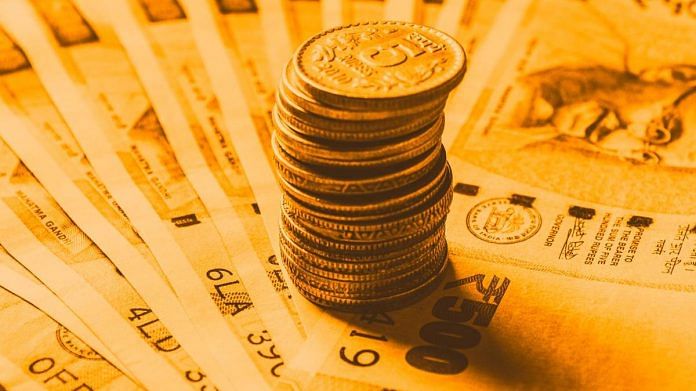New Delhi: The Economic Survey has projected the Indian economy will grow between 8 and 8.5 per cent in 2022-23, amid expectations of recovery in momentum due to the benefits of the supply-side reforms announced by the Narendra Modi government in the last two years.
However, the survey added the caveat that its projections are based on the assumption that with Covid-19 infections dipping, there won’t be further pandemic-related disruptions, and oil prices will remain in the $70-75/barrel range, among others. The price hit a fresh seven-year high of $88.85 per barrel Friday, the highest level since October 2014, according to data from the Petroleum Planning and Analysis Cell.
“This projection is also based on the assumption that there will be no further debilitating pandemic-related economic disruption, monsoon will be normal, withdrawal of global liquidity by major central banks will be broadly orderly, oil prices will be in the range of US$70-$75/bbl, and global supply chain disruptions will steadily ease over the course of the year,” said the survey.
Finance Minister Nirmala Sitharaman tabled the Economic Survey 2021-22 in Parliament Monday ahead of the Union Budget 2022-23, which she will present Tuesday.
According to the annual document, which gives projections for the forthcoming fiscal and presents a review of the financial year gone by, the supply-side reforms undertaken by the government over the last two years include deregulation of numerous sectors, simplification of processes, removal of legacy issues like ‘retrospective tax’, privatisation, production-linked incentives and so on.
While the projected GDP growth for FY23 will make India the fastest growing economy in the world even next year, it is still below the International Monetary Fund (IMF)’s projections of 9 per cent.
The GDP growth in the ongoing fiscal (2021-22) is expected at 9.2 per cent, according to the National Statistical Office (NSO), while the Reserve Bank of India (RBI) has pegged it at 9.5 per cent.
At 9.2 per cent, India’s GDP growth in 2021-22 will be the fastest in at least 17 years. It had contracted by a record 7.3 per cent in 2020-21.
“Overall, macroeconomic stability indicators suggest that the Indian economy is well-placed to take on the challenges of 2022-23,” said the survey.
Also read: Indians want agriculture, roads infra as top focus in FM Sitharaman’s FY23 Budget, survey shows
Growth in revenues will help in meeting fiscal targets
With the strong rebound in tax revenues in 2021-22, the government will be able to provide additional fiscal support if necessary, the Economic Survey said.
“The fiscal support given to the economy as well as to the health response caused the fiscal deficit and government debt to rise in 2020-21. However, a strong rebound in government revenues in 2021-22 has meant that the government will comfortably meet its targets for the year while maintaining the support, and ramping up capital expenditure,” the survey said.
The fiscal deficit target for 2021-22 is Rs 15 lakh crore, or 6.8 per cent of the GDP.
The Centre’s fiscal deficit in the April-November period stood at Rs 6.9 lakh crore, accounting for 46.2 per cent of the full-year target, data released by the Controller General of Accounts showed. The deficit in the year-ago period was at 135.1 per cent of the full-year target as the pandemic-induced lockdowns had fractured the government’s finances.
However, the government’s financial position is substantially better in the current fiscal, primarily on account of the sharp rise in receipts.
The higher-than-projected nominal GDP at 17.6 per cent in 2021-22 will also help the government to project a lower fiscal deficit as a ratio of GDP. According to estimates, the deficit in 2021-22 will fall to 6.5 per cent from the budgeted 6.8 per cent because of the higher nominal GDP projected by the NSO.
Need to be wary of global energy prices, survey says
According to the Economic Survey, inflation has reappeared as a global issue in both advanced and emerging economies, and India needs to be wary of imported inflation, especially from global energy prices.
India’s headline inflation rate based on the Consumer Price Index (CPI) surged to a five-month high of 5.6 per cent in December, primarily on account of the statistical effect of a low base. Retail inflation was 4.91 per cent a month ago.
With this, CPI inflation has averaged 5 per cent for the October-December period, marginally below the RBI’s forecast of 5.1 per cent.
Wholesale price inflation, however, has been running in double-digits.
(Edited by Amit Upadhyaya)
Also read: History and facts about Union Budget






